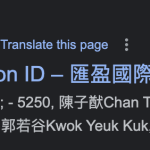Hey there,
We want to clarify that Search Engine Optimization (SEO) is a complex and specialized field that involves various strategies and techniques to improve a website's visibility on search engines like Google. While we can provide some general recommendations to assist you, it's important to note that SEO is a broader topic that may require additional expertise.
To prevent Google from crawling specific content on your WordPress site, such as a View generated by the Toolset or a custom post, you can use a combination of methods:
• Robots Meta Tag:
You can add a "noindex" meta tag to the specific pages or views you want to exclude from search engine indexing. Here's how to do it:
- Edit the post or View in question.
- In the WordPress editor, switch to the "Text" or "Code" view.
- Add the following code within the <head> section of the page:
<meta name="robots" content="noindex, nofollow">
This code tells search engines not to index the page or follow any links on it.
• Robots.txt File:
You can also use the robots.txt file to block search engines from crawling specific URLs or directories. Here's how:
- Connect to your server using FTP or a file manager.
- Locate the robots.txt file in your WordPress root directory (public_html or www).
- Edit the robots.txt file and add the following lines to block a specific URL or directory:
User-agent: *
Disallow: /path-to-your-specific-page/
Replace "/path-to-your-specific-page/" with the actual URL path to the page you want to block.
• WordPress SEO Plugin:
If you're using an SEO plugin like Yoast SEO or All in One SEO Pack, you can also set individual page-level SEO settings to "noindex" and "nofollow" for specific posts or Views:
- Edit the post or View.
- Scroll down to the SEO settings provided by your SEO plugin.
- Look for options to set the page as "noindex" and "nofollow."
Please bear in mind that the suggestions we provided, such as using meta tags, robots.txt files, and SEO plugins, are intended as general guidelines to help you take steps to prevent search engines from indexing specific content. However, please understand that these methods are not foolproof, and search engines may still discover and index content over time.
Additionally, managing SEO and ensuring optimal search engine performance often involves ongoing efforts, monitoring, and adjustments, which may require the assistance of SEO professionals.
If you have specific SEO-related questions or concerns beyond the scope of these general recommendations, we recommend consulting with an SEO expert or agency who can provide specialized guidance tailored to your website's unique needs.
We hope this information helps you in the right direction, and please feel free to reach out if you have any further questions or need assistance with other aspects of Toolset.
Best regards,
Mateus
